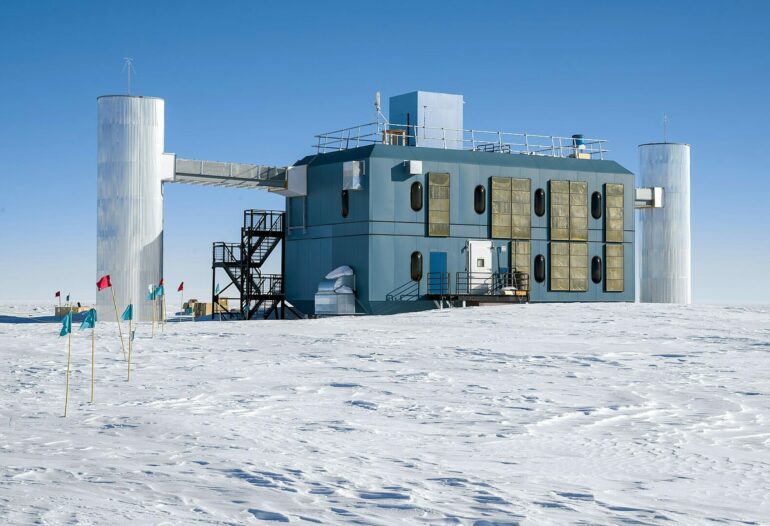About a trillion tiny particles called neutrinos pass through you every second. Created during the Big Bang, these “relic” neutrinos exist throughout the entire universe, but they can’t harm you. In fact, only one of them is likely to lightly tap an atom in your body in your entire lifetime.
Most neutrinos produced by objects such as black holes have much more energy than the relic neutrinos floating through space. While much rarer, these energetic neutrinos are more likely to crash into something and create a signal that physicists like me can detect. But to detect them, neutrino physicists have had to build very large experiments.
IceCube, one such experiment, documented an especially rare type of particularly energetic astrophysical neutrino in a study published in April 2024. These energetic neutrinos often masquerade as other, more common types of neutrino. But for the first time, my colleagues and I managed to detect them, pulling out a few from almost 10 years of data.
Their presence puts researchers like me one step closer to unraveling the mystery of how highly energetic particles like astrophysical neutrinos are produced in the first place.
IceCube observatory
The IceCube Neutrino Observatory is the 800-pound gorilla of large neutrino experiments. It has about 5,000 sensors that have peered intently at a gigaton of ice under the South Pole for over a decade. When a neutrino collides with an atom in the ice, it produces a ball of light that the sensors record.
When neutrinos move through IceCube, a tiny fraction of them will interact with atoms in the ice and produce light, which the sensors record. In the video, the spheres represent individual sensors, with the size of each sphere proportional to how much light it detects. The colors indicate the light’s relative arrival time, according to the colors of the rainbow, with red arriving earliest and violet latest.
IceCube has detected neutrinos created in several places, such as the Earth’s atmosphere, the center of the Milky Way galaxy and black holes in other galaxies many light-years away.
But the tau neutrino, one type of particularly energetic neutrino, has eluded IceCube – until now.
Neutrino flavors
Neutrinos come in three different types, which physicists call flavors. Each flavor leaves a distinct imprint on a detector like IceCube.
When a neutrino bangs into another particle, it usually produces a charged particle that corresponds with its flavor. A muon neutrino produces a muon, an electron neutrino produces an electron, and a tau neutrino produces a tau.
Neutrinos with a muon flavor have the most distinctive signature, so my colleagues and I in the IceCube collaboration naturally searched for those first. The muon emitted from a muon neutrino collision will travel through hundreds of meters of ice, making a long track of detectable light, before it decays. This track allows…
